German tanks of the second world war
With the outbreak of World War II, German tanks successfully fought with enemy tanks, but with the advent of more advanced German tanks in the anti-Hitler coalition, Germany had to abandon light tanks and concentrate on developing medium and then heavy tanks first.
Medium Tank Pz.Kpfw.III Ausf. (G, H, J, L, M)
The medium tank Pz.Kpfw.III was developed in the 1935 year as part of the accepted concept of warfare as an effective means of combating enemy tanks, and until the 1943 year it was the main tank of the Wehrmacht. Produced from 1937 to 1943 years, a total of 5691 tank was released. Before the war, modifications of the Pz.Kpfw.III Ausf tank were produced. (A, B, C, D, E, F). And during the war period 1940-1943 years of modification Pz.Kpfw.III Ausf. (G, H, J, L, M).
The tanks of the first batch of Pz.Kpfw.III Ausf.A had a “classic German” layout with a transmission in the nose of the tank, weighing 15,4 tons, a crew of five people, with bullet-proof protection with an armor thickness of 10-15 mm, with a short-barreled 37-mm KwK gun 36 L / 46,5 and three 7,92-mm machine guns MG-34, an engine with 250 horsepower, providing 35 km / h highway speed and 165 km range. Before the war and during the war he underwent a number of modifications. Of the main changes to the war on the Ausf.E modification, the main reservation was brought to 30 mm and an engine with 300 horsepower was installed.
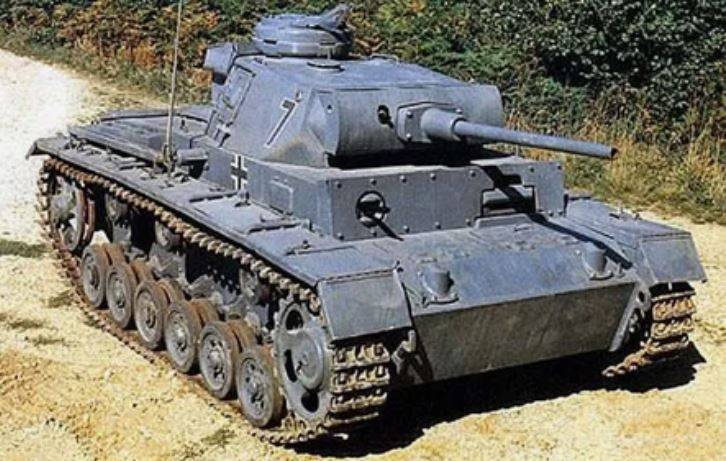
In 1940, the modification of the Pz.Kpfw.III Ausf.G tank was launched into serial production, in which a short-barreled 50-mm KwK38 L / 42 gun was installed on the tank, since the long-barreled gun was not yet brought up and one was installed instead of two coaxial machine guns. The weight of the tank increased to 19,8 tons.
On the modification of Ausf.H, produced since the end of the 1940 year, the main difference was the strengthening of the reservation. The turret feed was made of a single bent armor plate with a thickness of 30 mm and an additional armor plate with a thickness of 30 mm was welded onto the front of the hull, while the forehead protection of the hull increased to 60 mm.
On the modification of Ausf.J, produced since March 1941, the main difference was to increase the protection of the forehead of the case. The thickness of the main armor plate has been increased to 50 mm, and since December 1941 the long-barreled 50-mm KwK 39 L / 60 gun with increased armor penetration has been installed.
On the Ausf.L modification, the forehead protection of the hull and turret is increased to 70 mm due to the installation of additional armor plates with a thickness of 20 mm, the weight of the tank increased to 22,7 tons.
The Ausf.M modification, produced since October 1942, did not differ much, six mortars were installed on the sides of the tower to launch smoke grenades, the ammunition load of the gun was increased, and an anti-aircraft machine gun mount was placed on the commander’s turret.
Modifications Ausf.N, produced since July 1943 year, installed short-barreled 75-mm gun KwK 37 L / 24, similarly used on tanks Pz. Kpfw.IV Ausf. (A - F1), the weight of the tank increased to 23 tons.
With the outbreak of war, Pz.Kpfw.III successfully opposed French light tanks, medium D2, S35 and heavy B1bis, it lost, its 37-mm guns could not penetrate the armor of these tanks. The same situation was with the British light and medium tanks of pre-war production, with insufficient armor and equipped with light weapons. But since the end of the 1941, the British army in the battles in North Africa has already been saturated with more advanced tanks Mk II Matilda II, MK.III Valentine, Mk.VI Crusader and the American M3 / M5 General Stuart and Pz.Kpfw.III began to lose them. Nevertheless, the German army often won in tank battles thanks to a more competent combination of tanks and artillery both in offensive and defense.
On the Eastern Front in the 1941 year, Pz.Kpfw.III I tanks in tank divisions comprised from 25% to 34% of the total number of tanks and, on the whole, they were equivalent opponents of most Soviet tanks. In terms of armament, maneuverability and armor protection, he had significant superiority only over the T-26, the BT-7 was inferior to him in armor protection, and the T-28 and KV in maneuverability, but in all characteristics Pz.Kpfw.III was weaker than the T-34.
At the same time, Pz.Kpfw.III surpassed all Soviet tanks in the best visibility conditions from the tank, the quantity and quality of observation devices, the reliability of the engine, transmission and chassis, as well as a more successful distribution of duties between crew members. These circumstances, in the absence of superiority in the tactical and technical characteristics, allowed Pz.Kpfw.III in most cases to emerge victorious in tank duels. However, when meeting with the T-34, and even more so with the KV-1, this is not easy to achieve, since a German tank gun could penetrate the armor of Soviet tanks only from a distance of no more than 300 m.
Given that in the 1941 year, Pz.Kpfw.III formed the basis of the German tank forces and did not far surpass the Soviet tanks, which were several times larger in their characteristics, Germany took great risks in attacking the USSR. And only tactical superiority in the use of tank formations allowed the German command to win convincing victories at the initial stage of the war. Since the 1943 of the year, the main load in the confrontation with Soviet tanks passed to the Pz.Kpfw.IV with the long-barreled 75-mm gun, and the Pz.Kpfw.III began to play a supporting role, while they still accounted for about half of the Wehrmacht tanks on the Eastern Front.
In general, the Pz.Kpfw.III was a reliable easy-to-operate machine with a high level of crew comfort and its modernization potential at the beginning of the war was quite sufficient. But, despite the reliability and adaptability of the tank, the volume of its turret box was insufficient to accommodate a more powerful gun, and in 1943 it was discontinued.
Medium Tank Pz.Kpfw.IV
The Pz.Kpfw.IV tank was developed in 1937 in addition to the Pz.Kpfw.III tank as a fire support tank with a longer-range cannon with a powerful fragmentation shell capable of hitting anti-tank defenses beyond the reach of other tanks. The most massive Wehrmacht tank, mass-produced from 1937 to 1945 years, all were released 8686 tanks of various modifications. Modifications of the tank Ausf.A, B, C were produced before the war. modifications of Ausf. (D, E, F, G, H, J) during World War II.
The Pz.Kpfw.IV tank also had a “classic German” layout with a front transmission and a crew of five. With the weight of the modification of the Ausf tank. With 19,0 tons, it had low armor protection, the thickness of the armor of the forehead of the hull and turret was 30 mm, and the sides were only 15 mm.
The hull and turret of the tank were welded and did not differ in the rational inclination of the armored plates. A large number of hatches facilitated the landing of the crew and access to various mechanisms, but at the same time reduced the strength of the hull. The tower was multi-faceted and made it possible to upgrade the armament of the tank. On the roof of the tower behind the commander’s turret was installed with five viewing devices. The tower could be rotated manually and with the help of an electric drive. The tank provided good living conditions and visibility to the tank crew, and there were perfect observation and aiming devices perfect at that time.
The main armament on the first modifications of the tank consisted of a short-barreled 75-mm KwK.37 L / 24 gun and additional armament from two 7,92-mm MG-34 machine guns, one paired with a gun, the other directional in the hull.
As a power plant, the Maybach HL 120TR engine with an output of 300 l was used. sec., providing a speed of 40 km / h and a range of 200 km.
The modification of the Ausf.D tank, produced from the 1940 of the year, was distinguished by the enhanced armor protection of the sides to 20-mm and additional 30-mm armor of the forehead of the hull and turret.
On the modification of the Ausf.E tank, manufactured since the end of the 1940 year, according to the results of the Polish campaign, the thickness of the front sheet was increased to 50 mm and an additional 20-mm protection was installed on the sides of the hull. The weight of the tank increased to 21 tons.
On the modification of the tank Ausf. F, issued since 1941 year, reservation has been changed. Instead of the hinged armor of the forehead of the hull and turret, the thickness of the main armor plates was increased to 50 mm, and the thickness of the sides of the hull and turret was increased to 30 mm.
On the modification of the Ausf.G tank, manufactured since 1942, the short-barreled 75-mm gun was replaced by the long-barreled 75-mm gun KwK 40 L / 43 and the frontal armor of the hull was reinforced with additional 30mm armor plates, while the weight of the tank increased to 23,5 tons. This was due to the fact that in a collision on the Eastern Front with the Soviet T-34 and KV-1, German anti-tank guns could not penetrate their armor, and the 76-mm Soviet guns penetrated the armor of German tanks at almost any real combat distance.
The modification of the Ausf.N tank, which has been produced since the spring of 1943, changed the reservation, instead of additional 30-mm armor plates on the forehead of the tank body, the thickness of the main armor plates was increased to 80-mm and hinged anti-cumulative screens from 5-mm armor plates were introduced. A more powerful 75-mm KwK 40 L / 48 gun was also installed.
Modification of the tank Ausf.J, issued since June 1944 year, was aimed at reducing the cost and simplification of the production of the tank. The tower’s electric drive and auxiliary engine with generator were removed from the tank, an additional fuel tank was installed, and the hull roof was strengthened by installing additional 16-mm armor plates. the weight of the tank increased to 25 tons.
Unlike the Pz.Kpfw.III tank, which was created as an effective anti-tank weapon, the Pz.Kpfw.IV tank was created in addition to the Pz.Kpfw.III and was considered as an assault artillery support tank, designed to fight not with tanks, but with fire enemy points.
It should also be noted that Pz.Kpfw.IV was developed within the framework of the “blitzkrieg” concept and the main attention was paid to its mobility, while firepower and protection were insufficient at the time of the creation of the tank. The short-barreled gun with a low initial velocity of armor-piercing projectile and the weak thickness of the frontal armor, on the first modifications only 15 (30) mm, made the Pz.Kpfw.IV an easy target for anti-tank artillery and enemy tanks.
Nevertheless, the tank Pz.Kpfw.IV turned out to be a long-lived and survived not only tanks of pre-war development, but also a number of tanks developed and produced in series during the Second World War. The sharply increased combat characteristics of the tank during its modernization, which led to the installation of a long-barreled gun and increased frontal armor to 80 mm, made it a versatile tank capable of performing a wide range of tasks.
It turned out to be a reliable and easily controlled machine and was actively used by the Wehrmacht from the beginning to the end of World War II. However, the mobility of the tank in the last overweight versions was clearly unsatisfactory and, as a result, by the end of the war Pz.Kpfw.IV was seriously inferior in its characteristics to the main medium tanks of the countries of the anti-Hitler coalition. Moreover, German industry was unable to organize its mass production and in the quantitative ratio he also lost. During the war, the irretrievable loss of the Wehrmacht in the tanks Pz.Kpfw.IV amounted to 7636 tanks.
Before the start of World War II, Pz.Kpfw.IV made up less than 10% of the Wehrmacht's tank fleet, nevertheless, it successfully fought with the tanks of the countries of the anti-Hitler coalition. With the installation of a long-barrel 75-mm gun, he confidently opposed the T-34-76 and almost all American and English tanks at most real battle distances. With the advent of the T-1944-34 in the 85 year and the modifications of the American M4 General Sherman with the 76mm gun, significantly exceeding Pz. IV and striking him from a distance of 1500-2000 meters, he finally began to lose in the tank confrontation.
Heavy tank Pz.Kpfw.V "Panther"
The Pz.Kpfw.V Panther tank was developed in 1941-1942 as a response to the appearance of the Soviet T-34 tank. Serially produced since the 1943 year, a total of 5995 tanks were produced.
The layout of the tank was a "classic German" with a front transmission, outwardly it was very similar to the T-34. The crew of the tank was 5 man, the hull and turret design was assembled from armored plates connected “in a thorn” and with a double weld. Armor plates were installed at an angle to increase armor resistance in the same way as on the T-34. A commander’s cupola was installed on the roof of the tower, the hatches of the driver and radio operator were placed on the roof of the hull and did not weaken the upper frontal sheet.
With the weight of the 44,8 ton tank, it had good security, the thickness of the armor of the forehead of the hull top 80 mm, the bottom 60 mm, the sides top 50 mm, the bottom 40 mm, the forehead of the tower 110 mm, the sides and the roof of the tower 45 mm, the roof of the hull 17 mm, the bottom 17 -30 mm.
The armament of the tank consisted of a long-barreled 75-mm KwK 42 L / 70 gun and two 7,92-mm MG-34 machine guns, one coaxial with a cannon, the other directional.
As the power plant, the Maybach HL 230 P30 engine with 700 horsepower was used, providing a speed on the 55 highway km / h and a cruising range of 250 km. The option of installing a diesel engine was being worked out, but it was abandoned due to the shortage of diesel fuel needed for submarines.
The chassis on each side contained eight track rollers, staggered in two rows with an individual torsion bar suspension, the front and rear pairs of rollers had hydraulic shock absorbers, the drive wheel was front-mounted.
The concept of the Pz.Kpfw.V tank no longer reflected the concept of the Blitzkrieg, but the defensive military doctrine of Germany. After the fighting on the fronts of World War II, the main attention was paid to the protection of the tank and its firepower while limiting mobility due to the heavy weight of the tank.
The first experience in the combat use of Pz.Kpfw.V tanks on the Kursk Bulge revealed both the strengths and weaknesses of this tank. This batch of tanks was notable for their low reliability and non-combat losses from malfunctions were very high. Among the advantages of the new tank, German tankers noted reliable protection of the frontal projection of the hull, which at that time was invulnerable to all tank and anti-tank Soviet guns, a powerful gun that allowed to hit all Soviet tanks and self-propelled guns in the forehead and good sighting devices.
However, the protection of the remaining projections of the tank was vulnerable to the fire of 76,2-mm and 45-mm tank and anti-tank guns at the main battle distances. The main weakness of the tank was its relatively thin side armor. Best of all, the tank showed itself in active defense, actions from ambushes, destruction of advancing enemy tanks from great distances, counterattacks, when the influence of weakness of the side armor was minimized.
The tank had a number of undoubted advantages - good smoothness of operation, large volume of the fighting compartment, increasing crew crew comfort, high-quality optics, high rate of fire, large ammunition load and high armor penetration of the KwK 42 gun. In the 1943 year, the armor penetration of the cannon shells ensured the defeat of any tank of the anti-Hitler coalition countries that fought then at distances up to 2000 m.
On the other hand, in the 1944 year the situation changed, new types of tanks and artillery shells of the 100, 122 and 152 mm calibers were adopted for the armies of the USSR, the USA and England, which literally broke through the Pz.Kpfw.V armor that became extremely fragile.
The tank’s drawbacks were also its high height due to the need to transmit torque from the engine to the transmission units via cardan shafts under the floor of the fighting compartment, the transmission units and drive wheels were more vulnerable due to their location in the frontal part of the vehicle, which was most exposed to shelling, complexity and unreliability " chess "running gear. The dirt that accumulated between the road wheels often froze in winter and completely immobilized the tank. To replace damaged inner track rollers from the inner row, it was necessary to dismantle from a third to half of the outer rollers, which took several hours.
Only Soviet KV-85, IS-1, IS-2, and American M26 Pershing tanks can act as Pz.Kpfw.V analogues. M26 was a belated reaction to the appearance of Pz.Kpfw.V, but in terms of its basic characteristics, it corresponded to the level of Pz.Kpfw.V and could withstand it on equal terms. He began to enter the troops in small numbers only in February 1945 and did not play a serious role in the battles of World War II.
The Soviet IS-2 heavy tank, with all the external similarities in its overall dimensions and Panther, was used not as the main tank, but as a breakthrough tank with a different balance of armor and weapons. In particular, much attention was paid to good on-board booking and fire power against unarmored targets. The power of the 122-mm gun in the IS-2 was almost twice as high as that of the 75-mm gun KwK 42, but the armor penetration was quite comparable. In general, both tanks were well adapted to destroy other tanks.
In England, only towards the end of the war were they able to create some kind of alternative to the Pz.Kpfw.V in the form of the A34 Comet tank. Launched at the end of the 1944 of the year, the A34 Comet, armed with an 76,2-mm tank gun, yielding somewhat less in the armor of the Pz.Kpfw.V, weighed 10 tons less and had higher firepower and maneuverability.
Heavy tank Pz.Kpfw.VI Tiger
In accordance with the concept of “blitzkrieg” in the German army at the first stage there was no place for heavy tanks. The medium tanks Pz.Kpfw.III and Pz.Kpfw.IV were quite comfortable with the military. Since the end of the 30's, the development of such a tank was carried out, but due to the lack of demand for a tank of this class, no one was particularly interested in them. With the attack on the Soviet Union and the clash with the Soviet T-34 and KV-1, it became clear that the Pz.Kpfw.III and Pz.Kpfw.IV were seriously inferior to them and the need arose to develop a more advanced tank. Work in this direction was intensified and in the 1941 year the Pz.Kpfw.VI tank was developed, the main purpose of which was to fight against enemy tanks. In the 1942 year, he began to enter the army, for the 1942-1944 years, 1357 tanks Pz.Kpfw.VI Tiger were released.
The tank was a "classic German" layout with a front transmission. The crew of the tank was 5 man, the driver and radio operator were located in front of the hull. commander, gunner and loader in the tower. The commander’s cupola was installed on the roof of the tower.
The hull and turret were welded from armor plates, mounted mainly vertically without tilt angles. Armored plates docked using the dovetail method and connected by welding. With a weight of 56,9 tons, the tank had high armor protection, the thickness of the armor of the forehead of the hull top and bottom 100 mm, the middle of 63 mm, the sides of the bottom 63 mm, the top of 80 mm, the forehead of the tower 100 mm, the sides of the tower 80 mm and the roof of the tower 28 mm, the armor plates of the 90 gun -200 mm, roof and bottom 28 mm.
The armament of the tank consisted of a long-barreled 88-mm KwK 36 L / 56 gun and two 7,92-mm MG-34 machine guns, one coaxial with a cannon, the other directional.
As a power plant, a Maybach 700 horsepower engine was used. and semi-automatic gearbox. The tank was easily controlled with the help of a helm, and gear shifting was carried out without much effort. The power plant provided speed on the 40 km / h highway and 170 km range.
The chassis on each side contained eight "staggered" large-diameter track rollers arranged in two rows with an individual torsion bar suspension and a front wheel drive. There were two types of caterpillars on the tank, a transport one with a width of 520 mm and a combat one with a width of 725 mm.
The firepower of Pz.Kpfw.VI with an 88mm gun before the appearance of the Soviet IS-1 allowed to destroy any tank of the countries of the anti-Hitler coalition at any combat distance, and only tanks of the IS-1 and IS-2 series had armor that allowed them to withstand the shelling from KwK 36 from the frontal angles and medium distances.
Pz.Kpfw.VI in the 1943 year had the most powerful reservation and not a single tank could hit it. Soviet 45-mm, English 40-mm and American 37-mm guns did not penetrate it even at extremely close combat distance, 76,2-mm Soviet guns could penetrate the side armor of Pz.Kpfw.VI from distances not exceeding 300 m. T-34 -85 pierced his frontal armor from a distance of 800-1000 meters. Only at the end of the war was the saturation of the armies of the countries of the anti-Hitler coalition with heavy 100-mm, 122-mm and 152-mm guns made it possible to effectively combat Pz.Kpfw.VI.
The positive sides of the tank include easy control of a very heavy machine and good smoothness, provided by a torsion bar suspension with a "staggered" arrangement of track rollers. At the same time, this design of the undercarriage in winter and off-road conditions was unreliable, the dirt that accumulated between the rollers during the night froze so that the tank was immobilized, and replacing damaged rollers from the inner rows was a tedious and lengthy procedure. The heavy weight significantly limited the capabilities of the tank, since off-road the vehicle’s transmission turned out to be overloaded and quickly failed.
The tank was expensive and difficult to manufacture and had a low maintainability of the chassis. Due to the heavy weight of the tank, it was difficult to transport by rail, as there were fears of damage to the bridges on which the cars moved.
Among the tanks of the countries of the anti-Hitler coalition Pz.Kpfw.VI there were no worthy opponents. In terms of firepower and security, it was superior to the Soviet KV-1, and in terms of mobility they were approximately equal. Only at the end of the 1943 year, with the adoption of the IS-2, an equivalent rival appeared. In general, inferior to the IS-2 in terms of security and firepower, Pz.Kpfw.VI beat him in technical rate of fire at minimum combat distances.
Heavy tank Pz.Kpfw.VI Tiger II "Royal Tiger"
The Pz.Kpfw.VI Tiger II tank was developed in the 1943 of the year as a tank destroyer and entered the army from January 1944 of the year. It was the most powerful tank that took part in the Second World War. In total, up to the end of the war 487 of such tanks were produced.
Tiger II retained the layout of the Tiger I tank with all its pros and cons. The crew also remained in the amount of five people. The hull design was changed; the slanted arrangement of armor was used, as on the Panther tank.
The weight of the tank increased to 69,8 tons, while the tank had excellent protection, the thickness of the armor of the forehead of the hull top 150 mm, the bottom of 120 mm, the sides of the 80 mm, the forehead of the tower 180 mm, the sides of the tower 80 mm, the roof of the tower 40 mm, the bottom 25-40 mm , roof housing 40 mm.
The armament of the tank consisted of a new long-barreled 88-mm gun KwK 43 L / 71 and two 7,92-mm machine guns MG-34.
The power plant was borrowed from the Tiger I. The Maybach engine with 700 horsepower was installed, providing 38 km / h highway speed and 170 km range.
The undercarriage was also borrowed from the Tiger I tank, only another track roller was added and the track width was increased to 818mm.
The penetration of the 88-mm KwK 43 gun ensured the Tiger II defeat of any tank in the battles of World War II. Even booking the most protected tanks, such as the American M26, the English Churchill and the Soviet IS-2, provided them with virtually no protection at real battle distances.
The frontal projection of the tank, despite the significant thickness of the armored plates and their inclined location, was by no means invulnerable. This was due to a decrease in alloying additives in the material of armor plates due to the loss by Germany of a number of deposits of non-ferrous metals, especially nickel. The sides of the tank were even more vulnerable, the 85-mm Soviet guns D-5T and C-53 pierced them from a distance of 1000-1500 m, the American 76-mm gun M1 hit on board from a distance of 1000-1700 m, and the Soviet 76,2-mm guns ZIS-3 and F-34 hit him aboard at best with 200 meters.
In a duel battle, the Tiger II exceeded all tanks both in terms of armor and in accuracy and armor penetration of guns. However, such head-to-head collisions were very rare and Soviet tankers tried to conduct a maneuvering battle, for which the Tiger II was the least suitable. Acting on the defensive, from ambushes, like a tank destroyer, he was extremely dangerous for Soviet tankmen and could destroy several tanks before he was discovered and rendered harmless. As for the allied armored vehicles, the American and British tanks could not effectively resist the Tiger II and the allies most often used against it Aviation.
The increase in tank weight led to an extreme overload of the power plant and chassis and a sharp decrease in their reliability. Constant failures led to the fact that about a third of the tanks failed even on the march. Low driving performance and unreliability Tiger II almost completely leveled its advantages in firepower and armor.
In terms of firepower and protection, the Tiger II was one of the strongest tanks during the Second World War. However, numerous shortcomings of its design, especially in the power plant and chassis, huge weight, low reliability, as well as the operational-tactical situation, which did not allow full use of the tank's advantages, determined the overall rather low potential of the vehicle.
Heavy tank Pz.Kpfw.VIII "Maus"
On Hitler's initiative, in 1943, the development of an extra-heavy breakthrough tank with the highest possible defense began. At the end of 1943, the first instance of the tank would be made. which, surprisingly, when running around the factory yard, showed good controllability and the fundamental possibility of creating such a super tank. Due to the lack of capacity for production, its mass production did not start; only two copies of the tank were made.
The tank was a classic configuration weighing 188 tons with a crew of 6 people, armed with two twin cannons in the turret - 128-mm KwK-44 L / 55 and 75-mm KwK-40 L / 36,6 and one 7,92-mm machine gun MG-34.
The tank had powerful armor, the thickness of the armor of the forehead of the hull 200 mm, the sides of the hull bottom 105 mm, the top 185 mm, the forehead of the tower 220 mm, the sides and the stern of the tower 210 mm, the roof and the bottom of 50-105 mm.
The power plant consisted of a Daimler-Benz MV 509 aircraft engine with 1250 horsepower. and an electric transmission with two generators and two electric motors, providing speed on the highway 20 km / h and range 160 km. Caterpillars with a width of 1100 mm provided the tank with a quite acceptable ground pressure of 1,6 kg / sq. cm.
In battle, the Pz.Kpfw.VIII Maus tank was not tested. As the army of the Soviet Union approached in April 1945, two samples of the tank were detonated, one of the two samples was assembled and now it is on display at the Armored Museum in Kubinka.
During the Second World War, German designers were able to develop, and the German industry to organize serial production of a line of medium and heavy tanks, which in their characteristics are not inferior, but in many ways superior to the tanks of the countries of the anti-Hitler coalition. On the fronts of this war, German tanks confronted their opponents on equal tanks, and German tankers often won battles when using tanks with worse performance due to more advanced tactics of their use.
- Yuri Apukhtin
- avatars.mds.yandex.net, s1.1zoom.ru/big3/518, eastcoastarmory.com
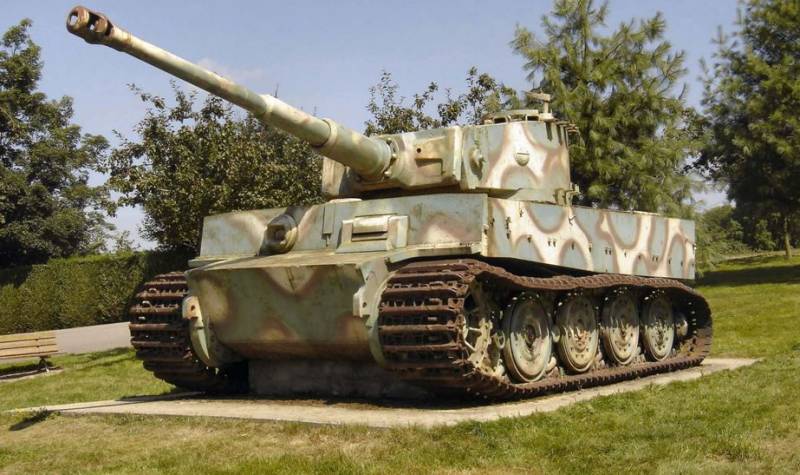
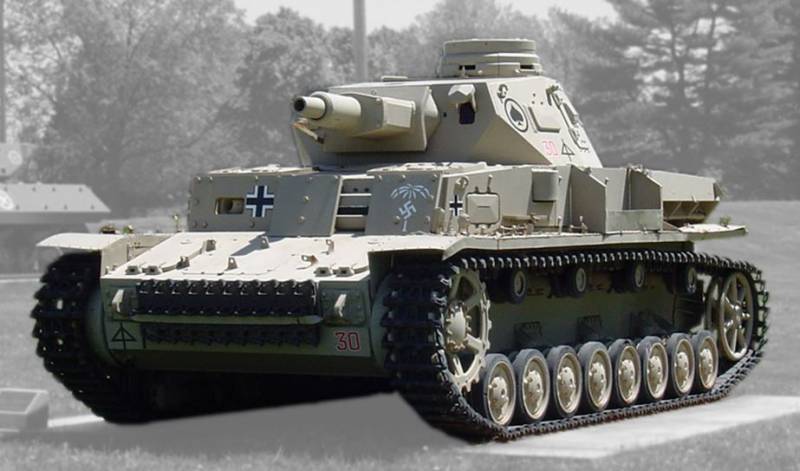
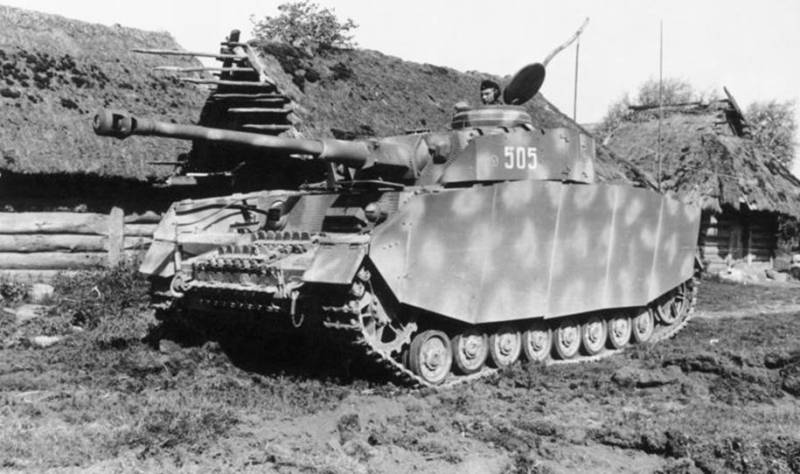
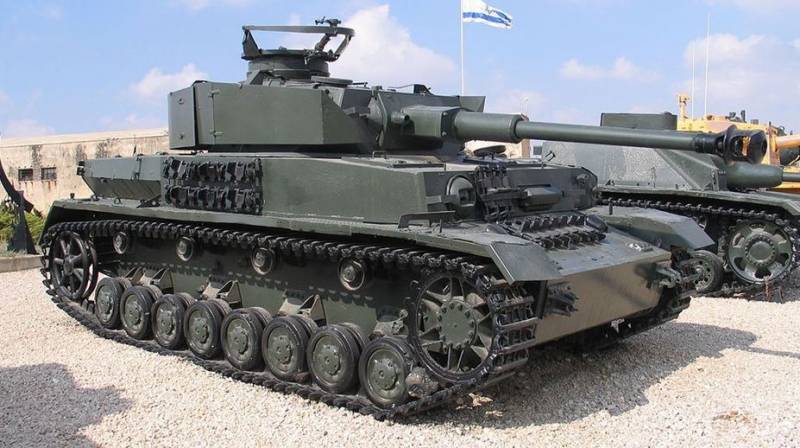
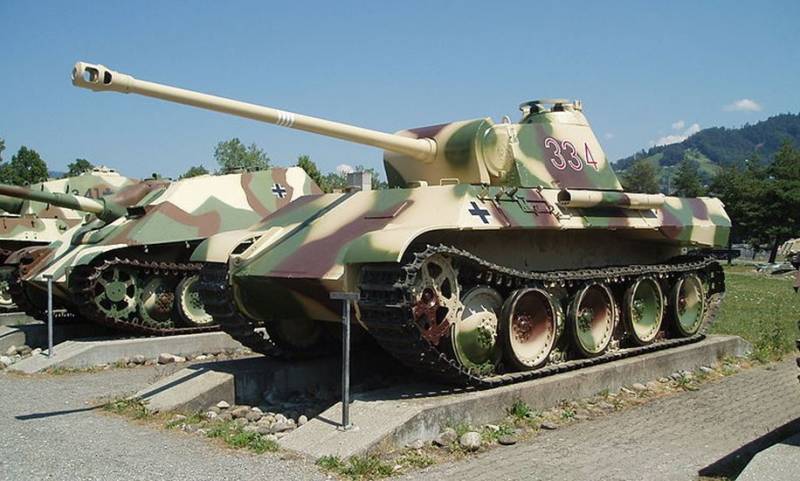
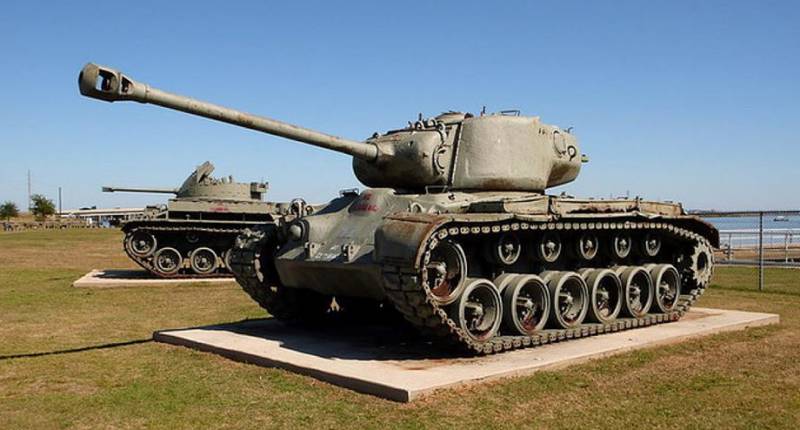
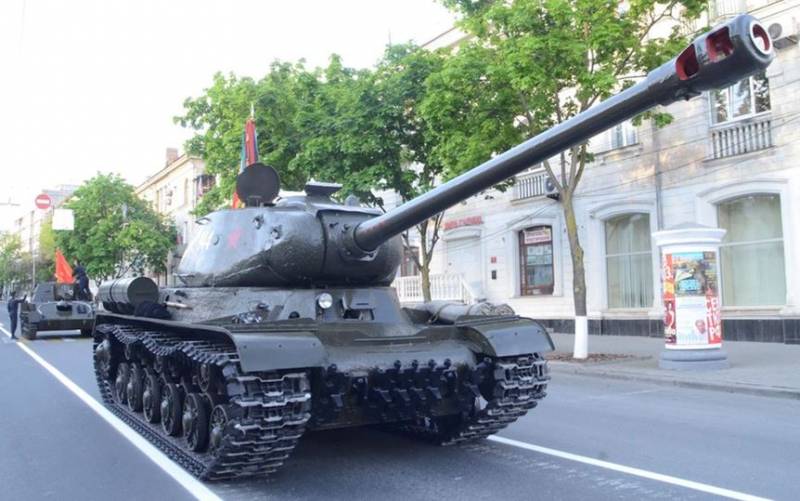
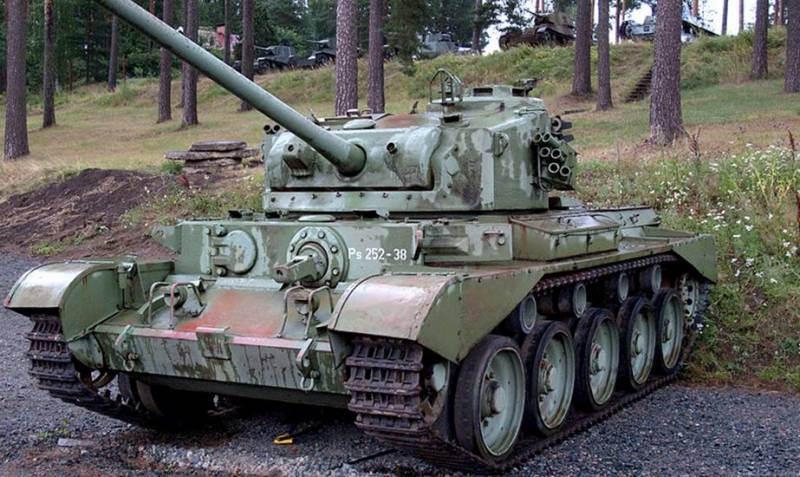
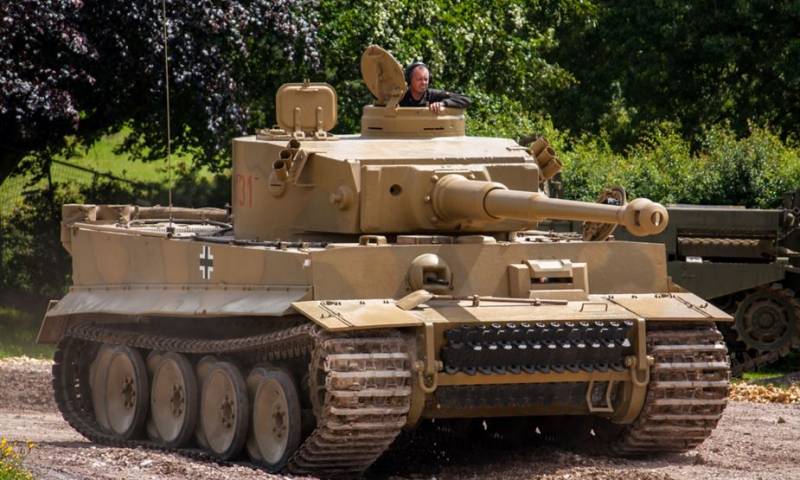
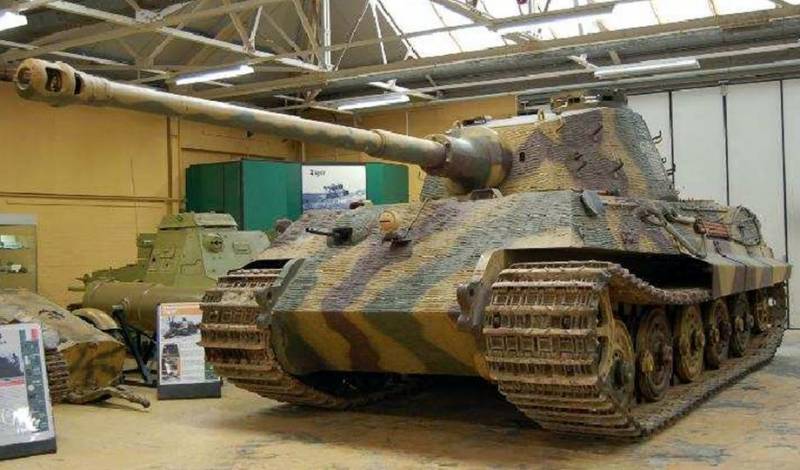
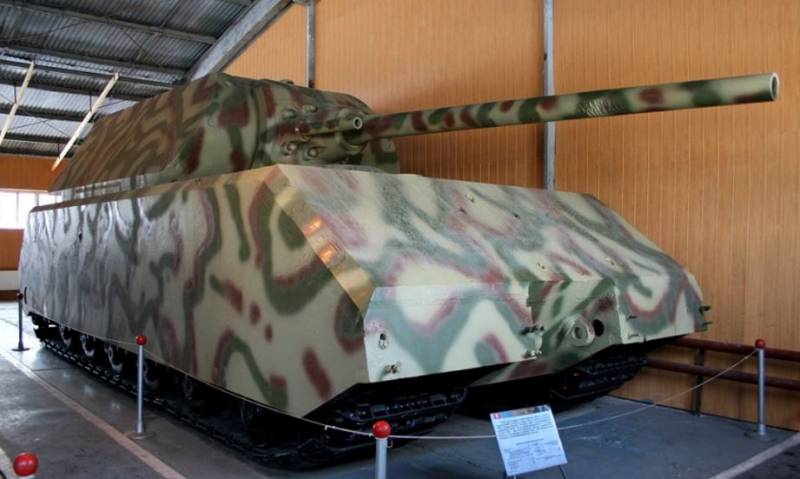
Information